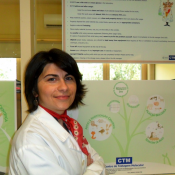On the edge of the bantu expansions: inference of recent population history with independently evolving haplotypic systems
Africa is one of the most ethnically and genetically diverse regions of the world. Because modern humans have first emerged in Africa, the bulk of human genetic variation in our species can be traced to this continental region. However, despite the importance of characterizing their genetic diversity, African populations have been much less studied than other non-African human groups. Given this paucity of data, seeking for the microevolutionary basis of current genetic variation in Africa represents a major challenge.
Among the complex series of demographic movements that have shaped the patterns of human genetic variation in sub-Saharan Africa, the massive dispersal of Bantu-speaking farmers across subequatorial regions in the last 4000-5000 years (~160 generations) remains one of the most impressive examples of large population movements in our species. In spite of the relative recentness of these dispersals, several important questions about the tempo and mode of demographic events undergone by the ancestors of present-day Bantu farmers still persist.
The long term objective of this project was to infer the historical and evolutionary events that reshaped the distribution of African genetic variation during the Bantu expansions, in the last 4000-5000 years. Our short time goal was focused on the population history that gave rise to current patterns of genetic diversity in the southwest and southeast edges of those expansions, using a new set of molecular markers and recently developed computational tools.
Specifically we aimed to: (1) develop new UEPSTR polymorphisms, each consisting of a rapidly evolving short tandem repeat (STR) linked to a unique event polymorphism (UEP); (2) use a battery of UEPSTRR systems, together with Y chromosome and mitochondrial DNA data, to characterize a set of representative populations from Angola and Mozambique; (3) infer key microevolutionary parameters (population sizes, divergence times and migration rates) needed to compare alternative hypotheses on the origin, antiquity and extent of isolation of different population groups.

Fernando Jorge Guimarães Sequeira
Dora Henriques, Susana Lopes, Margarida Coelho, Isabel Alves, Sandra Beleza, António Prista, Albertino Damasceno, Susana Alves Seixas

